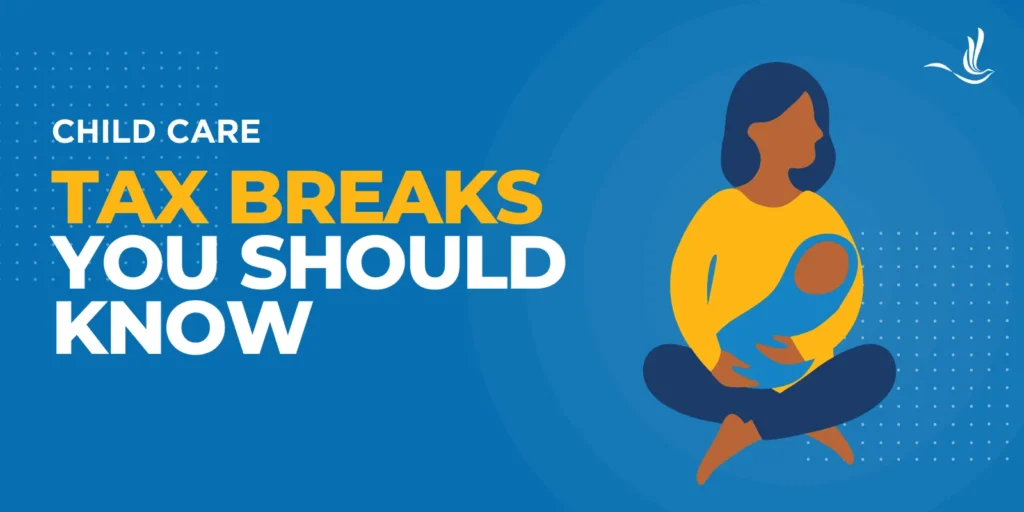
Raising a child comes with its fair share of expenses. Fortunately, the federal government recognizes the financial strain that parenting can put on families. With that, they offer child care tax breaks to help ease the burden. In this article, we will explore what child care tax breaks are, how they work, and how you can maximize your family’s finances with these valuable benefits.
Understanding Child Care Tax Breaks
Child care tax breaks are financial incentives provided by governments to help parents cover the costs of raising a child. These tax benefits are designed to alleviate some of the financial stress that comes with child care expenses. This makes it more affordable for families to provide the best care and opportunities for their children.
Types of Child Care Tax Breaks
Child and Dependent Care Credit
This credit is designed to help working parents offset the cost of care while they are working or seeking employment. That said, you cannot claim this credit if you do not have earned income. It covers a percentage of your child care expenses, up to a certain limit. You may deduct up to $3,000 in expenses for one qualified individual. You may deduct up to $6,000 for two or more qualified individuals.
While the Child and Dependent Care Credit covers individuals other than children, a qualified child includes those who were under age 13 when care was provided. They must be listed as a dependent on your tax return. Additionally, the person caring for your qualified child may not be your spouse, the child’s parent, another dependent listed on your tax return, or your own child aged 18 or under. You must provide the name, address, and Taxpayer Identification Number (TIN) of the person who cared for your child on your tax return. Finally, if you are married, you must file a joint return to claim this credit.
To calculate your credit amount, add up the total amount of child care expenses. Subtract any reimbursed expenses that your employer may provide. The percentage of your expenses that you can deduct will depend on your AGI and ranges from 20% to 35%. However, your expenses may not be more than your earned income for the year if you are single. If you’re married, it cannot be the lesser of you and your spouse’s earned income. You can claim the credit using IRS Form 2441 and attach it to your 1040 when filing your tax return.
Dependent Care Flexible Spending Account (DCFSA)
One of the lesser-known tax-advantaged accounts is the Dependent Care Flexible Spending Account (DCFSA). This employer-sponsored account allows you to set aside up to $5,000 (or $2,500 if you’re married filing separately) from your salary for dependent care. The major benefit of this account is that contributions are not subject to income tax or payroll taxes. This basically lowers your total taxable income. This is particularly beneficial for higher earners since it does not take income into consideration like the Child and Dependent Care Credit.
Dependent Care FSAs cover things like daycare, nursery school, after-school programs, some babysitting services, nannies, summer day camp, and even transportation to and from eligible care for your children and dependents. However, it does not cover educational expenses like tutoring, hobby lessons, field trips, and overnight camps. To use this account, employees need to submit a claim form requesting reimbursement for an eligible expense directly to their employer. Keep in mind that these accounts follow a “use it or lose it” policy. Unused funds do not rollover to the next year, nor can they be transferred to another FSA.
Maximizing Child Care Tax Breaks
To make the most of child care tax breaks, follow these tips:
- Keep Detailed Records: Maintain organized records of your child care expenses, including receipts, invoices, and statements. Accurate documentation is essential when claiming tax credits or deductions.
- Understand Eligibility: Familiarize yourself with the eligibility criteria for each tax break available. Criteria may include the child’s age, your income, and the type of care provider you use.
- File Taxes Accurately: Ensure that you file your taxes accurately, taking advantage of all the available child care tax breaks. Consider seeking professional tax advice to optimize your financial situation.
- Plan Ahead: Explore tax-advantaged savings accounts like DCFSAs as these can also help you save on taxes.
Conclusion
Child care tax breaks are valuable tools that can significantly reduce the financial burden of raising a family. By understanding the different types of tax breaks available and following best practices for maximizing them, parents can provide the best possible care for their children without feeling overwhelmed by the associated costs. Remember that tax laws can change, so it’s essential to stay informed about any updates or revisions to childcare tax breaks in your jurisdiction to continue making the most of these benefits. Optima Tax Relief is the nation’s leading tax resolution firm with over $1 billion in resolved tax liabilities.
If You Need Tax Help, Contact Us Today for a Free Consultation